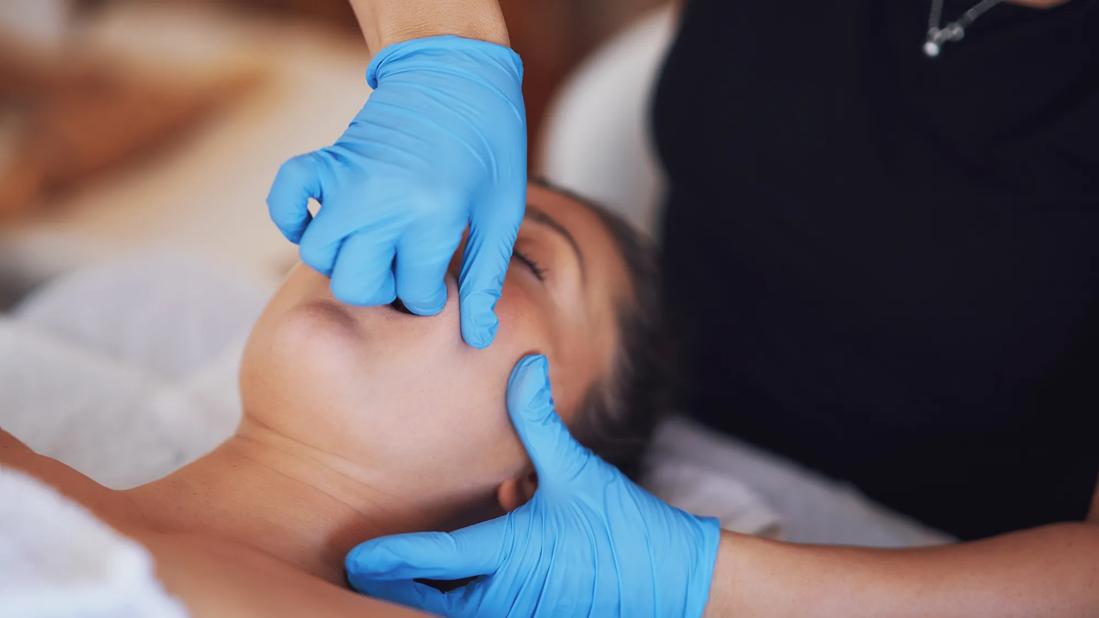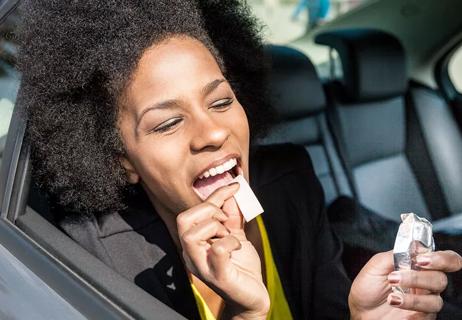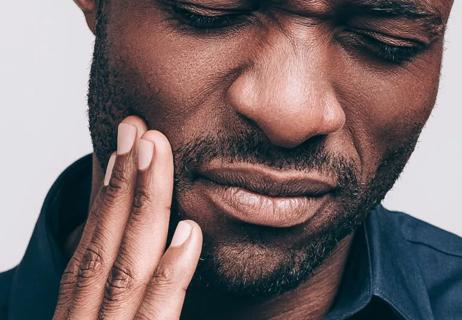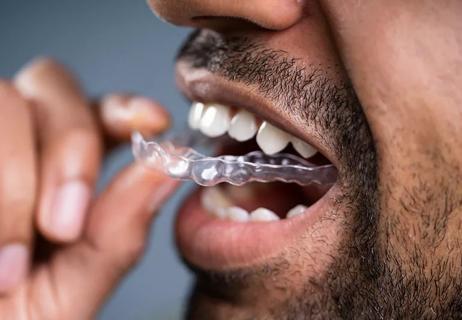Take a hands-on approach to release tension and reduce pain in your jaw muscles

Think about how often your mouth opens and closes during the day as you talk, chew, laugh, yawn … well, you get the point. That’s A LOT of movement — which explains why your jaw might sometimes ache.
Advertisement
Cleveland Clinic is a non-profit academic medical center. Advertising on our site helps support our mission. We do not endorse non-Cleveland Clinic products or services. Policy
So, how can you ease pain centered around the temporomandibular joints (TMJs) that connect your jawbone to your skull? Try a massage, suggests chiropractor Andrew Bang, DC.
Muscles surround your hinge-like TMJs to power jaw movement. But like any other muscles in your body, the ones in your jaw can be overused and abused to the point where they cause soreness, says Dr. Bang.
Teeth grinding or clenching (bruxism), an injury (such as a broken jaw) or conditions like arthritis may also fuel muscle pain and even limit the use of your jaw.
Any of these factors behind temporomandibular dysfunction (TMD) can bring tightness and imbalance to your jaw muscles. Nearly 1 in 5 adults report that they annually experience a painful TMD episode lasting at least five days.
This can result in:
Blame for the TMJ-related pain often points a finger at the cheek-to-jaw masseter muscle and other facial muscles that help your jaw open and close. These muscles can become inflamed, tense and painful from overuse.
A massage can help mend those muscles, as direct pressure releases muscle knots (trigger points) that may be behind your discomfort. Kneading the tissue can help unravel ropey muscle fibers and bring relief.
Advertisement
“When the jaw muscles are overly tight or imbalanced, manual therapy works well to help restore normal muscle tone and balance between TMJ muscles,” explains Dr. Bang. “It can be highly effective.”
The concept is no different than dealing with a sore hamstring or shoulder. You’re just working out the kinks in a different muscle group.
The answer to this question depends on you and your specific symptoms and needs, says Dr. Bang.
Some people schedule weekly or monthly TMJ massage visits with a chiropractor, physical therapist or other massage professional to keep the joint working well. An average session may last about 30 minutes.
Talk to a healthcare provider to come up with a plan that works best for you.
Self-massage is also an option and can be done regularly. Dr. Bang suggests trying this kneading technique, which focuses on the masseter muscle. To do it:
Simple jaw exercises can help stretch, strengthen and relax the muscles around your mouth. Here are four jaw exercises that Dr. Bang recommends trying at home or wherever you may be.
Here’s something to think about: In moments of stress, you may be tensing your jaw without even realizing it. One of the most straightforward exercises to help your TMJs is to relax your jaw intentionally.
To do it:
In another variation of this exercise, place a finger in front of your ear on the lower part of your jaw at the TMJ joint. Place another finger on your chin and use it to open and close your mouth partially or fully.
Chin tucks can help release jaw tension while also strengthening neck muscles and improving your posture.
To do it:
Think of this exercise as a push-up for your mouth muscles. It’s an easy one to do, even if it does feel odd at first.
To do it:
In another variation of this exercise, squeeze your chin between your fingers to offer resistance as your mouth closes.
Advertisement
Consider this stretching and strengthening exercise the “hokey pokey” for your jaw. (Turning yourself around is optional.)
To do it:
If you’re looking to up the challenge, increase the thickness of the object between your teeth.
Don’t let your jaw pain continue for weeks (or months!) on end. Massage is just one of many ways to find relief, says Dr. Bang. There’s also physical therapy, short-term muscle relaxers or a “night guard” to reduce teeth grinding at night.
“There are treatments available,” he emphasizes, “but it all starts with taking the first step to get help.”
Advertisement
Learn more about our editorial process.
Advertisement

The soreness could be from the way you sleep, teeth grinding, bite misalignment or other issues

Although Botox isn’t an FDA-approved treatment for TMD pain, it’s still considered a good supplemental therapy in some cases

From posture to massage, these 9 at-home remedies may help ease your jaw pain

You might think it’s fine, but your teeth and jaw beg to differ

If you have discomfort and pain in your face, it could mean something serious is going on

An expert gives us the details

TMJ pain can cause headaches, but chiropractic treatments, lifestyle adjustments and medication can help ease discomfort

Early morning red eyes can be a sign of several conditions, like dry eyes, allergies and eye strain

The best parenting style balances enforcing rules and showing plenty of love

Tips include cutting back on sugar, focusing on exercise and managing stress

It can be harder to let go when you’ve invested time, energy and emotions — but it might be the healthier choice long term